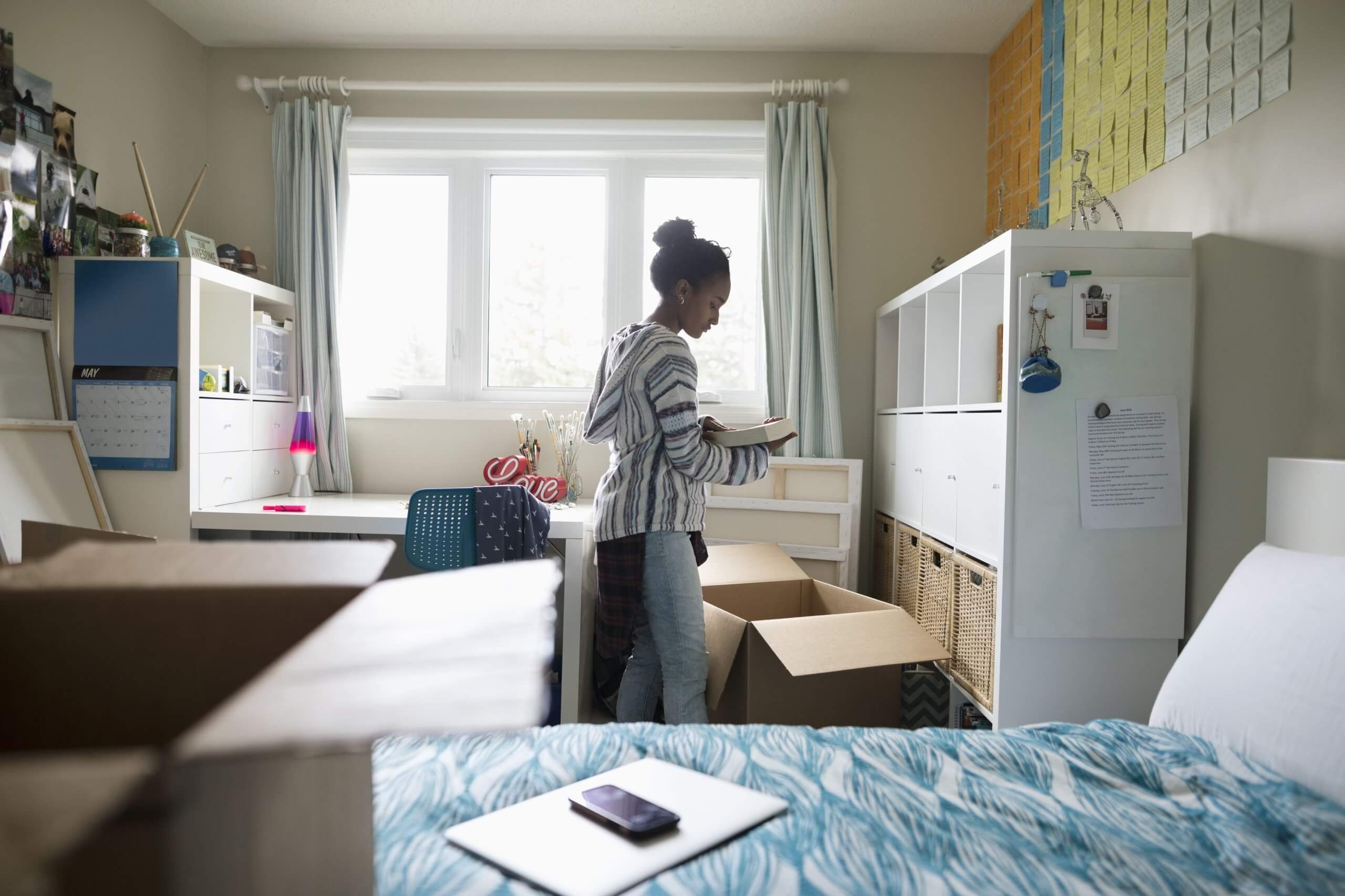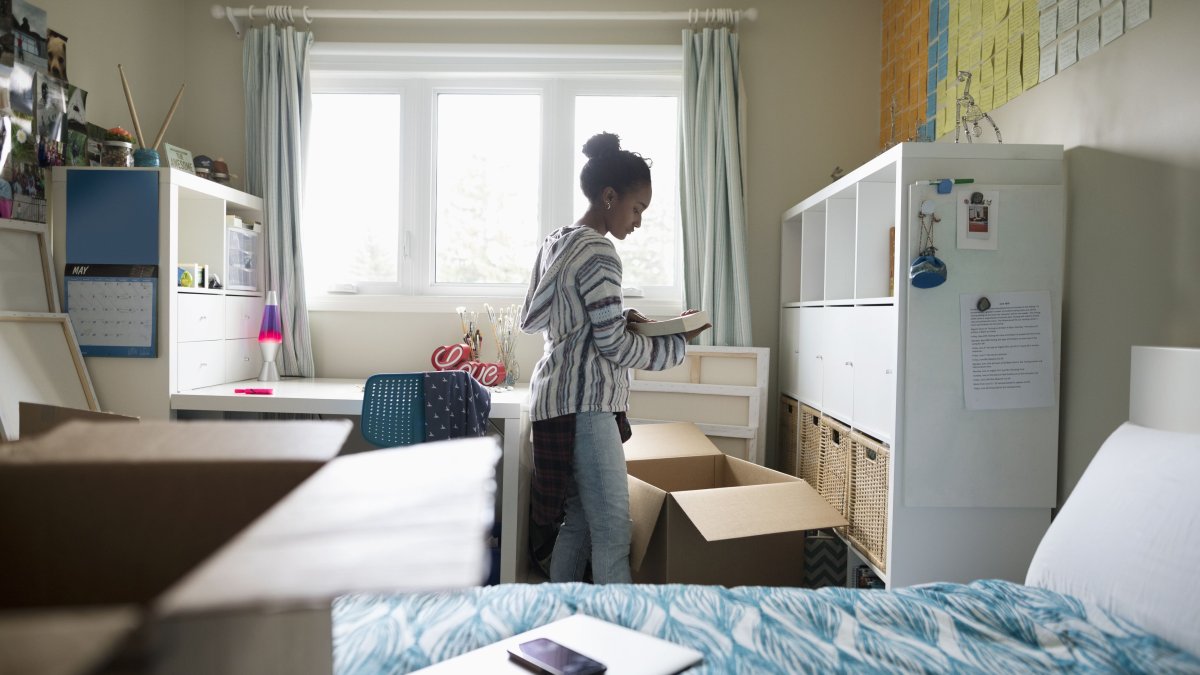
Packing up a bedroom can be one of the more challenging parts of preparing for a move along with appliances and furniture. You’ll usually find an assortment of items in a variety of sizes and shapes, depending on the size of the area you have to cover, packing the room may be time-consuming. In addition, packing each item in your moving boxes is no easy task since you need to account for the weight of your items so your boxes won’t become too heavy. Packing your belongings with the help of a professional removalist may make moving more convenient. Every city has many companies offering moving services. For example, there are some very affordable companies that you can rent moving boxes San Francisco that will take care of everything.
You will need:
Moving boxes (different sizes)
Packing tape
Bubble wrap or packing paper
Corrugated cardboard
Papers or notepads
Tools
Mattress covers
Furniture blankets
Cable ties/organisers
The bedroom may be one of the most difficult rooms that you will pack in your home. If you or your children are not minimalist, it is likely that it will take a long time to pack given the number of items that are in the room. To make packing more convenient, it’s best to prepare moving boxes of different sizes to accommodate items of all sizes.
If you’re opting for a DIY move or removals services that do not include packing/unpacking services, here’s what you need to do.
Declutter
If you have plenty of time before the move, this is the perfect opportunity to declutter and get rid of the items that you won’t be using when you move to your new home. Doing this will also lessen the items that you will need to unpack when you reach the new house.
Make decluttering easier by creating sections in the room for things you will keep, discard, or donate. Sort your belongings accordingly and as much as possible organise them in boxes, especially for things that you are keeping so packing them won’t take too much time. If you have appliances or items that have cords, roll them into coils and secure them using cable ties or organisers.
Letting go of certain items can be difficult, especially when the likelihood of getting the chance to use/wear the item in future is high. However, you also need to understand that these will only take up more space in your boxes or containers and add to the thing that you will need to unpack and organise when you relocate to store the free delivery from big basket.
Consider letting go of the following:
– You haven’t worn it in quite a while and it isn’t a thing you put something aside for unique events.
– Is giving indications of wear (stains or fraying).
– Is damaged and beyond repair.
– No longer fits with your style.
– Does not fit anymore.
Packing Small items
Pack small, non-fragile items like papers, books, notebooks, and accessories into small boxes. If you’re packing several books, it’s best to only pack a few in small boxes mixed with other light items to limit the weight of the boxes and make them easier to carry upon loading/unloading. If you are taking any items that may be easily crumpled, it is recommended that you keep them in their original boxes or wrap them in packing paper and put them in bags before putting them into the box to prevent scratches or damage.
When packing small, fragile items, it’s best to put them in the box they came in. If you no longer have them, you may use packing papers and bubble wrap to protect the fragile items. Once you are satisfied, secure the wrapped item using packing tape. Position the items strategically and add crumpled wrapping papers or towels/blankets as cushions to prevent them from breaking in case the vehicle is put under pressure when taking sharp turns during the move.
Packing your clothes/wardrobe
1. Check for dirty clothes and wash them, even jackets and scarfs that have only been used once. Moisture can cause moulds and leave a foul odour on clothes. Make sure that all clothes are clean and dry before packing them.
2. Organising and packing your clothes may be one of the most time-consuming tasks when preparing for a move. Organise your clothes by season to make unpacking less complicated when you reach your new home. As a result, you will have easy access to those items that you will need right away and those you should store at the back of your closet.
3. When possible, use wardrobe boxes to pack high-quality or expensive clothes. Keeping them in their hangers will make them easier to move into a new closet after you have unpacked your belongings in your new residence. You may also use garbage bags to pack clothes, keep them in their hangers and prevent wrinkles.
4. Before putting your clothes into boxes or bags, fold them neatly to prevent wrinkles. Folded clothes also take up less space in moving boxes. As you finish folding, sort the clothes according to their type to make them easier to pack.
5. Organise your clothes by type. Clothing items of a smaller size, such as underwear and socks, can be packed in smaller boxes or bags. When possible, pack your clothes according to season. This way, you will know which boxes to prioritise when you’re unpacking. Seal the boxes using packing tape and label each box appropriately.
Packing your Furniture
Bedroom furniture is often heavy or bulky. Even if you want to pack and prepare those first, it may be hard to do so, especially if you have no other furniture or area to sleep on until the day of the move. If you are hiring professional movers, they can handle the packing and preparation of your furniture. If not, here’s a guide on how to prepare your bedroom furniture for moving:
A few days before the move, start disassembling pieces of furniture that can be taken apart. Place bolts, nuts, screws and other smaller parts in clean, dry bags or containers. Label the bags properly to make it easier to find the items you need for each piece of furniture.
Cover the surfaces of your furniture using clean paper, bubble wrap, or shrink-wrap to protect it from nicks and scratches. If you have larger pieces of furniture, it is recommended that you use moving blankets to make sure that surfaces are completely covered.
Use bubble wraps or leg protectors to protect furniture legs. When possible, attach the legs to the furniture they belong to. This can help make sure that the pieces will fit perfectly when you reassemble them in your new home.
If you have area rugs, vacuum or wash and dry the rugs before rolling them up. Secure the roll with tape or ropes. You may also cover the rolled rugs with shrink-wrap, packing paper, or old blankets for additional protection.
Preparing Blankets and bedding materials
Whether you’re hiring a removalist or opting for a DIY move, it is highly recommended that you pack your belongings as soon as you secure a moving date. No matter how far your moving date is, you can always start with items that you seldom use or extras that you store in your cabinets.
Start packing blankets, pillowcases, sheets, and other linens that you won’t be needing until you complete your move. If you have old or worn-out pieces, consider using them as packing or wrapping materials for breakables. Line box or suitcase with large plastic to help keep the linens clean and protected.
Remove used linens from your bed. If you have enough time, wash and dry the bedding materials before packing them. If not, fold the linens neatly and pack them separately. You pack used linen with your pillows or keep them in a separate container with all used items that you need to wash when you reach your new home.
To keep your mattress from getting dirty, place the mattress in a mattress bag or a big box. You may also use a durable plastic protector to keep your mattress safe, especially while in transit. When possible, ask for assistance when you pack as mattresses are both bulky and heavy. This way, you can prevent any accidents that may cause injury and at the same time, ensure that the mattress is completely covered. If you’re doing the prep work on your own, lean the mattress against a wall in an upright position to give you more space to work on.
Whether you are moving on your own or hiring professionals to help with your move, always keep in mind that preparing your belongings as early as possible can contribute a lot to reducing the stress of getting things done as your moving date approaches. If you have lots of items in your bedroom, start by sorting your belongings and packing little by little, so you won’t have to rush everything at the last minute.
Luca Thomson
Related posts
Stay connected
- How LoveOn Chat Is Becoming the Most Versatile AI Companion for Digital UsersThe internet keeps shifting toward hyper-personal interaction, and AI companions are at the center of this shift. What used to be simple chatbots are now evolving into emotionally aware, adaptive, and multi-functional digital partners. Among the new generation of platforms, LoveOn Chat is becoming one... The post How LoveOn Chat Is Becoming the Most Versatile […]

